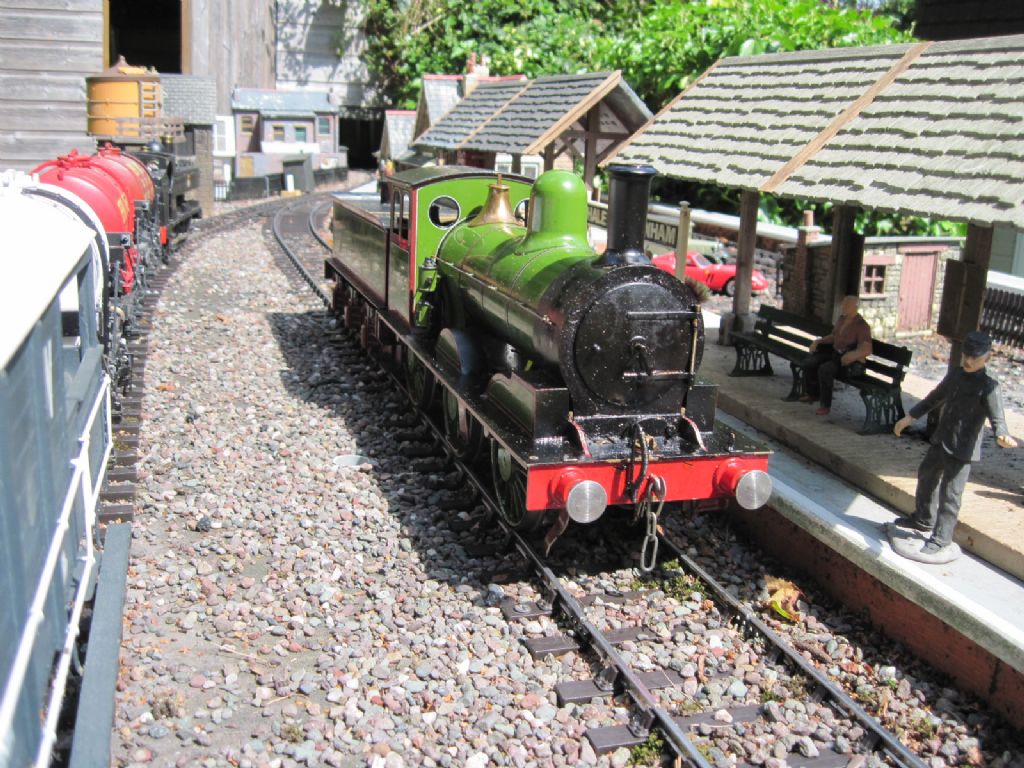I wish you all success!
However, do join a model-engineering society; for help and advice. It's quite an ambitious project you intend, and few model-engineers have railways in their garden, except perhaps a short, straight track on which to test their locomotives. They use club tracks instead.
You will need join a club anyway, for the boiler tests, if you intend driving your loco on any club track or public event; and the club does not (must not!) charge for the test as a commercial boiler-inspector would. There is no law to say you must have the boiler certified for private-only use, but it is obviously still wise for your own and your family's safety to test it by the current procedure. You can perform the physical test yourself, using the published handbook, but not certify it.
'
Driving and riding behind a 3-1/2" gauge locomotive, really needs a raised track. Although ground-level lines in 5" g, exist – Doug Hewson's Gilling layout is one such par excellence – that is really the minimum for ground-level railways, and suited only to experienced drivers and passengers. You can build a dual-gauge ground-level line with the larger 7-1/4" gauge used for the rolling-stock for stability, but driving a 3-1/4" gauge loco like that would be very difficult and uncomfortable. Even driving a 5" g. loco on ground-level lines is not easy, physically, unless you are fairly short and very supple.
I do not know if it still in print, but Martin Evan's (the previous ME editor of those shared initials) Manual Of Model Steam Locomotive Construction gives a very good outline of what is involved in making and driving a live-steam miniature locomotive. It also informs you of minimum track bend radii for the different gauges.
There are other books on the subject that may be more readily available now – try exploring TEE Publishing's stock-list.
These will also help you choose what locomotive to build, assuming that is your aim and you have or are creating a suitable workshop.
There are a number of design available in 3.25" gauge suitable for a first attempt, but I would go for something a little larger than LBSC's 'Tich' its designer touted as a suitable introductory project. His 'Juliet' would the better choice: not much larger, not intrinsically more difficult to make, but probably easier to drive. Other readers will no doubt suggest appropriate alternatives – my own field is more 7.25" gauge railway, and road steam vehicles.
Live-steam miniatures are not off-the-shelf items, unless the well-tried and popular 'Polly' range includes complete 3.5" gauge locos. Buying one second-hand really does need you knowing what to look for, and experienced guidance.
….
Regarding exhibitions, go to the Model Engineering, not Railway, shows. (Some, such as Harrogate this year did, include both hobbies to differing extents.)
As well as the major shows, peruse the Club Diary section of Model Engineer to see what public club exhibitions and running days are readily available to you. In fact attending a few running-days is likely to be at least as informative as the exhibitions, where the locos are simply sitting quietly on a table.
…
Without revealing your location too closely, if you tell us your area you may find others here can suggest a model-engineering society or two sensibly near you, and likely to match your wishes. Note that not all have 3.25" gauge railways, though, even if they accommodate the other gauges. (Mine doesn't: it has 5" and 7.25" GL, plus a 16mm-scale, circuits.)
It can be difficult introducing yourself to a society. I would expect most are welcoming, some perhaps more than others but it does depend on whom you first meet; and on a public running-day you should meet more than the two or three at a time manning an exhibition club-stand.
You do hear anecdotes about such-and-such club being an isolationist clique, but these boil down to one person meeting one or two crabby old members who do not realise the harm they do. Or to the applicant of course!
These comments apply in general to any interest, not just model-engineering.
…
Good Luck!
vic francis.






